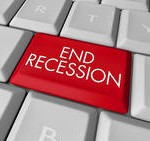 Dr. Susmit Kumar
Dr. Susmit Kumar
Before the 1930s Great Depression, there were recessions in 1797-1800, 1807-1814, 1819-24, 1837-43, 1857-60, 1873-79, 1893-96, 1907-8 and 1918-21. The government did not intervene in any of these previous economic recessions and opted to let the economy find its own solution. Until 1930s Great Depression, economists thought that free markets would automatically provide full employment on their own without the intervention of government.
But the severity of the 1930s Great Depression showed the structural defects in the economy and for the first time the government had to intervene by providing massive Keynesian spending in the first half of 1930s to create employment.
Due to the stimulus packages, the Roosevelt government was able to reduce the unemployment from 25 percent in 1930 to only 15 percent in 1939 at the onset of the Second World War. These numbers were very high according to present standards as only one person in the family used to work in those days. The unemployment reduced to a normal level only after the out break of the World War II when the US economy started churning out arms and armaments initially for the European allies and later on for their own country also. World War II spending on arms and armaments worked as massive Keynesian spending projects.
Using this same Keynesian stimulus formula, majority of countries have come out of the 2008 Great Recession. Therefore these days, people talk about Keynesian stimulus. But very few are aware of his another wonderful idea which he proposed towards the end of World War II. Right now, countries like U.S., several among EU, India, Vietnam and South Africa, are suffering from cronic trade deficits. There are very few countries, like Germany and China, who are increasing their market shares of trade surpluses year after year.
Towards the end of World War II, there were two competing plans for the future of global economic order – Britain’s Keynes plan and US’s Harry Dexter White plan. Keynes was for a world currency to be called, say bancor, by a global bank and an International Clearing Union. The world currency would be exchangeable with national currencies at fixed rates of exchange. Under Keynes plan, both debtors and creditors had to change their policies. A country with a large trade deficit would have to pay interest on its account and would have to devalue its currency and to prevent the export of capital. On the other hand, a country with large trade surplus would have to increase the value of its currency and to permit the export of capital. A country with a bancor credit balance, more than half the size of its overdraft facility, would have to pay interest. He even proposed the severe penalty of confiscation of surplus if at the end of year the country’s credit balance exceeded the total value of its permitted overdraft.1 Under the White plan, the US was given veto power in the working of the IMF and IBRD (now World Bank). The IMF was based in Washington, DC and staffed by mainly US economists and US Treasury officials.
In 1940s when the future of the world trade was discussed and the Bretton Woods conference was planned, most of the Third World countries were under colonial rule and had no say in the discussion at all. All the discussion happened between the US and Britain, and at the Bretton Woods conference, all other countries were just invited for the formal signing in ceremony. During that period, the U.S. gross domestic product (GDP) was almost half of the world’s GDP. Its gold reserve was $20 billion, almost two-thirds of the world’s total of $33 billion.2 Because of two World Wars, all European countries were highly in debts and had transferred huge amounts of gold to the US. Also they needed money from the US for their post-war reconstruction. Therefore, the US was able to impose its will and its plan at the Bretton Woods conference.
Under the Bretton Woods agreement, a system of fixed exchange rates was announced using the U.S. dollar as a reserve currency. The U.S. committed to convert dollars into gold at $35 an ounce. At the conference, the International Monetary Fund (IMF) and the International Bank for Reconstruction and Development (IBRD), which is now part of the World Bank, were established.
Right now the US is in the same situation as the Europeans in 1940s, i.e. highly in debt and needs money for its economy to recover from the recession. Hence if there is an economic crisis and another Bretton Woods conference, countries like China can impose its will and countries like the US and India may be at the receiving end due to their massive debts. It is worth noting that countries like India, Vietnam and South Africa are becoming consumer countries like US and the trade deficits are increasing year after year. The FOREX of India and South Africa are dependent on foreign investments which can flee the country at the moment of crisis. Therefore it is better to negotiate some kind of tax on both trade surplus and trade deficit as proposed by Keynes when debts are manageable, otherwise China is going to rule the global economy.
Notes
1 Monbiot, George, “Clearing Up This Mess,” The Guardian, November 18, 2008.
2 Benjamin, M. Rowland and Brittain, W.H. (eds.), Balance of power or hegemony: The interwar monetary system, 1976, p. 220.
Copyright The author 2011
